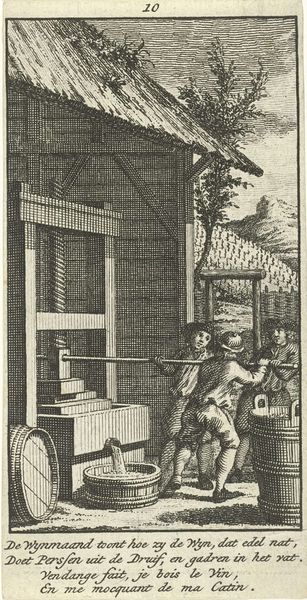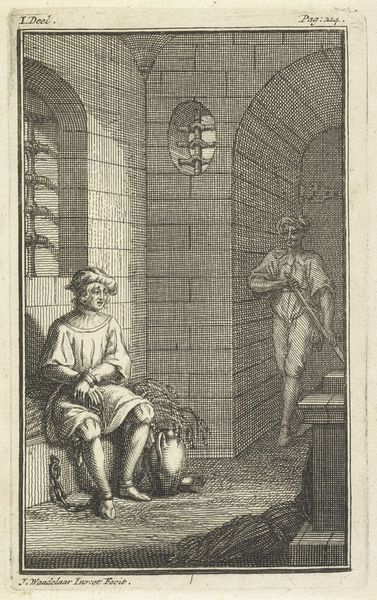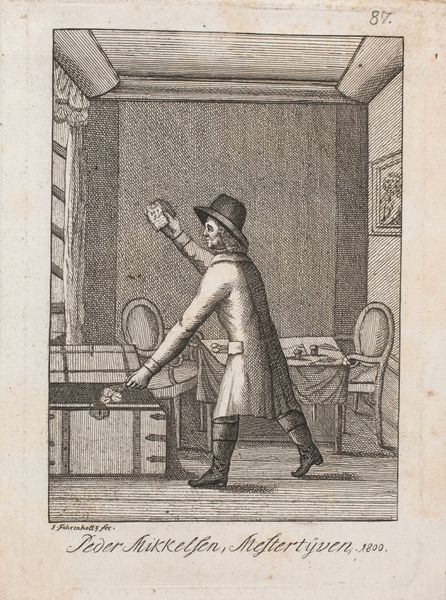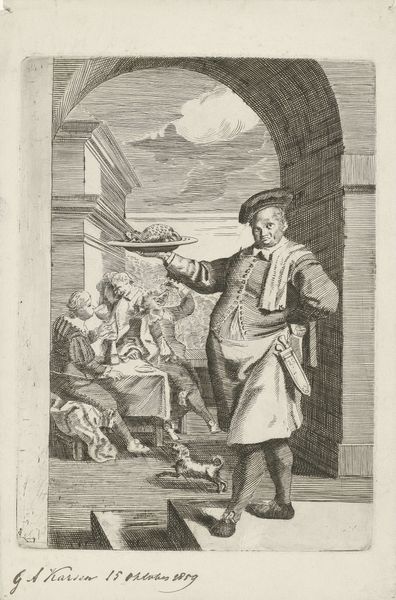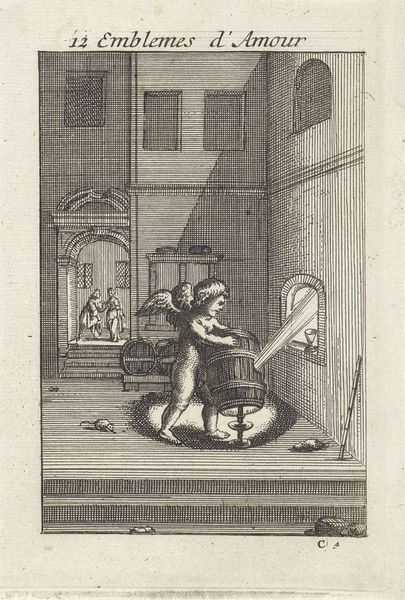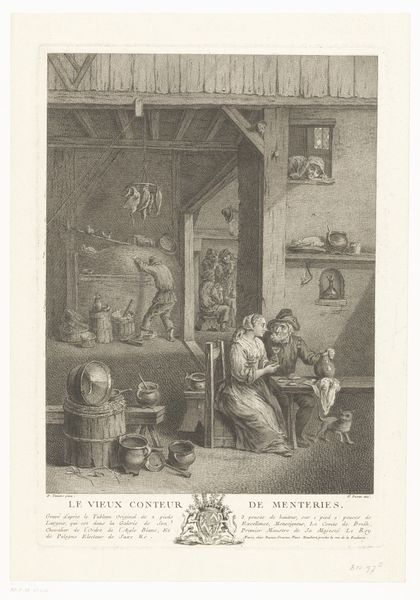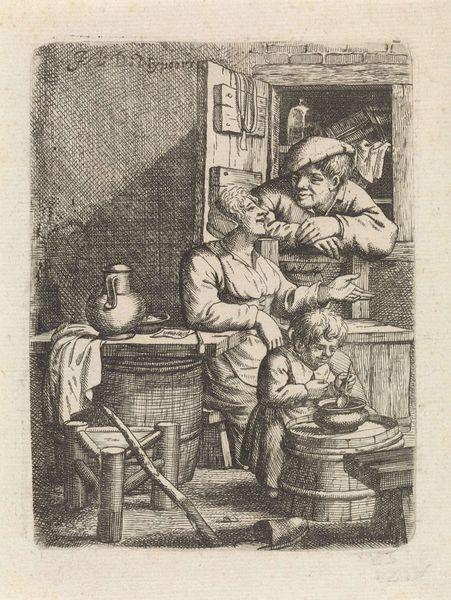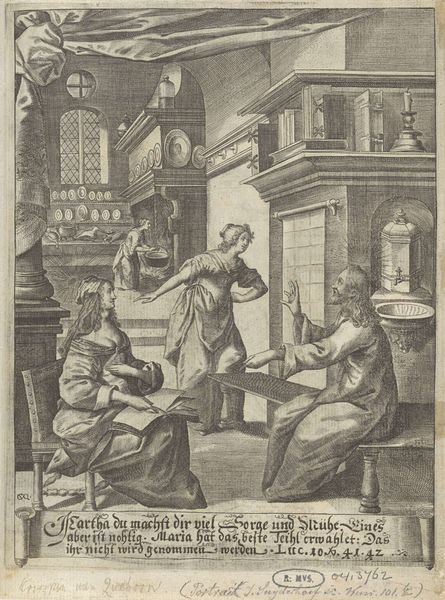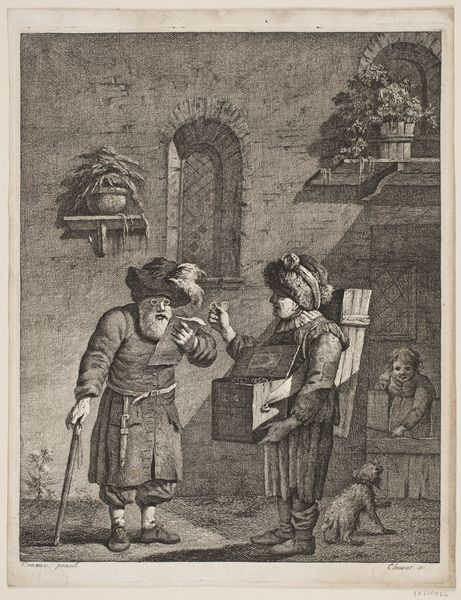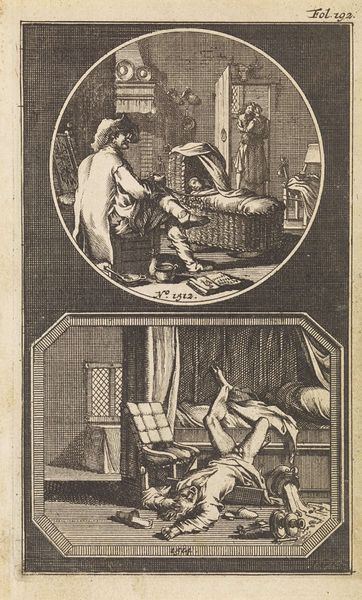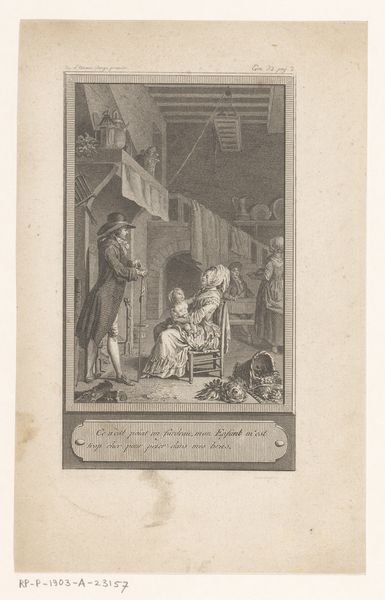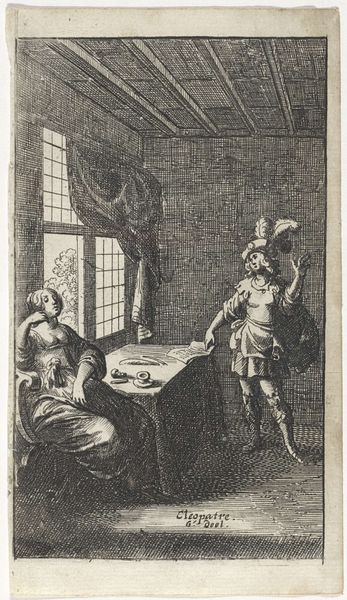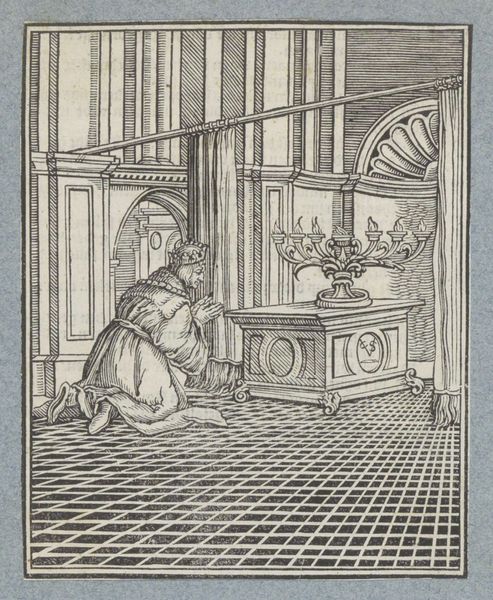
print, engraving
#
portrait
# print
#
dog
#
landscape
#
19th century
#
genre-painting
#
engraving
Dimensions: height 109 mm, width 80 mm
Copyright: Rijks Museum: Open Domain
Curator: We're standing before Philippus Velijn’s engraving, "Vrouw voor een huis bij een hond in een emmer," from 1824, currently held at the Rijksmuseum. It depicts a woman outside a house with a dog in a bucket. Editor: The textures are astonishing for an engraving. I’m immediately drawn to the contrast—the smooth pitcher versus the rough brick, and the fluffy dog crammed uncomfortably in what looks like a well-worn bucket. Curator: Velijn's work gives us insight into 19th-century Dutch life and genre painting, revealing how everyday scenes became worthy subjects. We can really get into the details of what her status might be, from dress, activity to where she's allowed in the village based on access. Editor: Absolutely. Consider the material realities of the time. The bucket—likely wood, constructed by a cooper, reveals the importance of traditional crafts, something mass production overshadows today. Also the access of materials dictates who would own something of value. Curator: Exactly. It makes me think about the consumption habits, even in relatively modest settings like this. The details around the pitcher of probable dairy tell a story of labour division. I find myself asking where did the dairymaid fit within that village and culture at large? Editor: And what about the dog? What purpose did the animal serve and who determined it could or couldn't drink what it wanted, when? Think about that labor - the raw resources needed and the level of mastery that went into fashioning these mundane items—it challenges our hierarchy of “fine” art. We aren’t necessarily seeing it. Curator: A really critical challenge. Because in terms of historical positioning, engravings like this disseminated visual culture. Their relative affordability and reproducibly made them accessible in a way paintings weren't, influencing popular tastes and perceptions. Editor: Indeed. Even though the setting seems simple, reflecting on the labor embedded helps us resist idealizing a vision of pastoral life. It's about seeing the hard work and skillful hands behind everyday objects. Curator: A welcome reminder that the image is far more layered than a simple slice of life. Editor: Agreed, the image's appeal isn't in some artistic ingenuity. We all get wrapped in what we know but what are we not seeing and whose labor propped it all up?
Comments
No comments
Be the first to comment and join the conversation on the ultimate creative platform.

